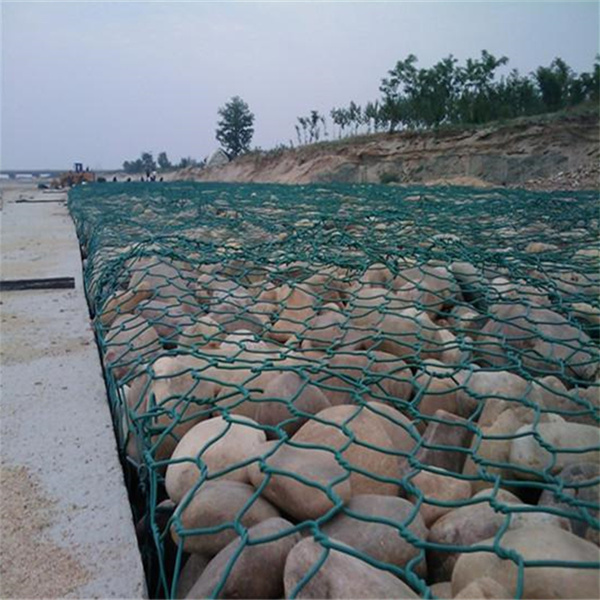Dec . 04, 2024 15:00 Back to list
Sustainable Gabion Solutions for Eco-Friendly Landscaping and Construction Projects
The Green Gabion Sustainable Solutions for Modern Challenges
In recent years, the concept of sustainability has permeated various sectors, influencing how we approach construction, landscaping, and environmental conservation. One innovative solution that embodies this shift towards eco-friendliness is the green gabion. These structures, traditionally made from wire mesh and filled with rocks or other materials, have been transformed to include vegetation, creating living walls that serve multiple environmental, aesthetic, and practical purposes.
Understanding Green Gabions
A green gabion merges the classic design of gabions with the beauty and functionality of plant life. By incorporating soil and suitable vegetation into the design, these structures provide more than mere erosion control or aesthetic appeal. They act as habitats for wildlife, enhance biodiversity, and improve air quality. The wire mesh framework allows for adequate drainage while providing a supportive structure for the growth of plants, which contributes to the stabilization of the soil around them.
Environmental Benefits
The environmental benefits of green gabions are profound. First and foremost, they effectively manage stormwater runoff, reducing the risk of flooding and erosion. The plants absorb rainwater, which mitigates the impact of heavy rainfall and helps in groundwater recharge. Moreover, as the vegetation grows, it can capture carbon dioxide and improve air quality, contributing positively to local ecosystems.
Incorporating green gabions into urban landscapes can significantly reduce heat island effects, making cities cooler and more livable
. The plants used in these structures can be chosen for their ability to thrive in local climates while requiring minimal upkeep, further emphasizing sustainability.Aesthetic Appeal
green gabion

Beyond their functional advantages, green gabions serve as stunning design elements in both rural and urban settings. They can be used as retaining walls, garden borders, or decorative features in public spaces. The natural look of stone combined with lush greenery can enhance the visual appeal of any area, making it more inviting and enjoyable for both residents and visitors.
Landscapers and architects are increasingly incorporating green gabions into their designs due to their versatility. They can be shaped and sized to fit various needs, from small garden features to large infrastructural projects. This adaptability allows for creative landscaping solutions that highlight the natural beauty of the environment.
Practical Applications
Green gabions are being utilized in various practical applications. In regions prone to erosion, these structures can provide effective reinforcement for slopes and riverbanks. Their ability to absorb and filter stormwater makes them ideal for managing runoff in developed areas, particularly in urban landscapes where impervious surfaces are prevalent.
Additionally, green gabions can serve as effective noise barriers. The combination of rocks and vegetation can dampen sound, making them a strategic choice for installations near highways or bustling urban centers. They are also increasingly being seen as elements of bioremediation efforts, helping to filter contaminants from water and improve the overall health of ecosystems.
Conclusion
As the world grapples with environmental challenges, the adoption of sustainable practices becomes ever more critical. Green gabions represent a unique intersection of functionality, aesthetic appeal, and environmental concern. They offer an innovative solution that can be easily integrated into existing landscapes and infrastructures, all while promoting ecological health and sustainability.
By choosing green gabions, we not only enhance our built environments but also contribute to a more sustainable future. Their versatility and benefits make them a wise choice for developers, architects, and environmentalists alike, paving the way for greener, more resilient communities. In a world where environmental consciousness is more important than ever, green gabions are a testament to what can be achieved when we blend nature with technology in our approach to development.
-
Why PVC Coated Gabion Mattress Is the Best Solution for Long-Term Erosion Control
NewsMay.23,2025
-
Gabion Wire Mesh: The Reinforced Solution for Modern Construction and Landscape Design
NewsMay.23,2025
-
Gabion Wall: The Flexible, Seismic-Resistant Solution for Modern Landscaping and Construction
NewsMay.23,2025
-
Gabion Wall Solutions: The Durable, Decorative, and Affordable Choice for Every Landscape
NewsMay.23,2025
-
Gabion Basket: The Durable and Flexible Alternative to Traditional Retaining Walls
NewsMay.23,2025
-
Gabion Basket: The Proven Solution for Slope Stability and Flood Control
NewsMay.23,2025
-
Versatility of Chain Link Fence Gabion
NewsMay.13,2025






